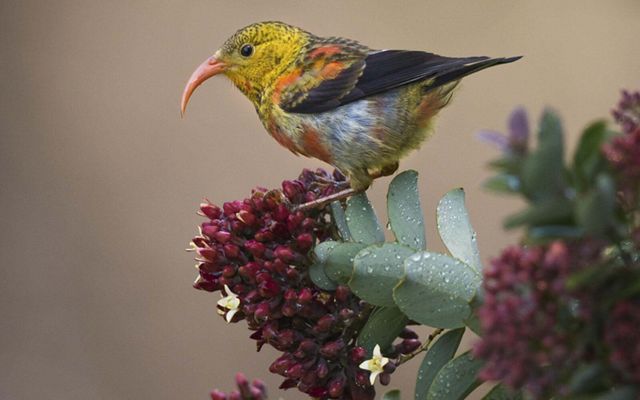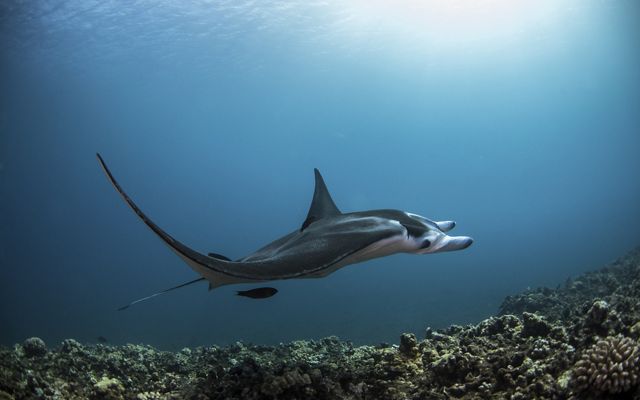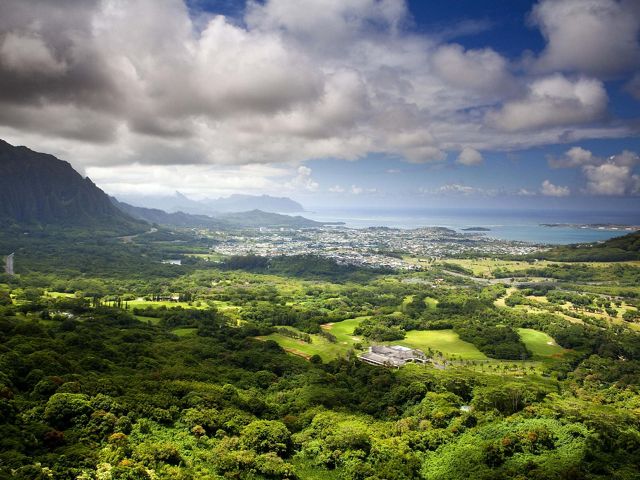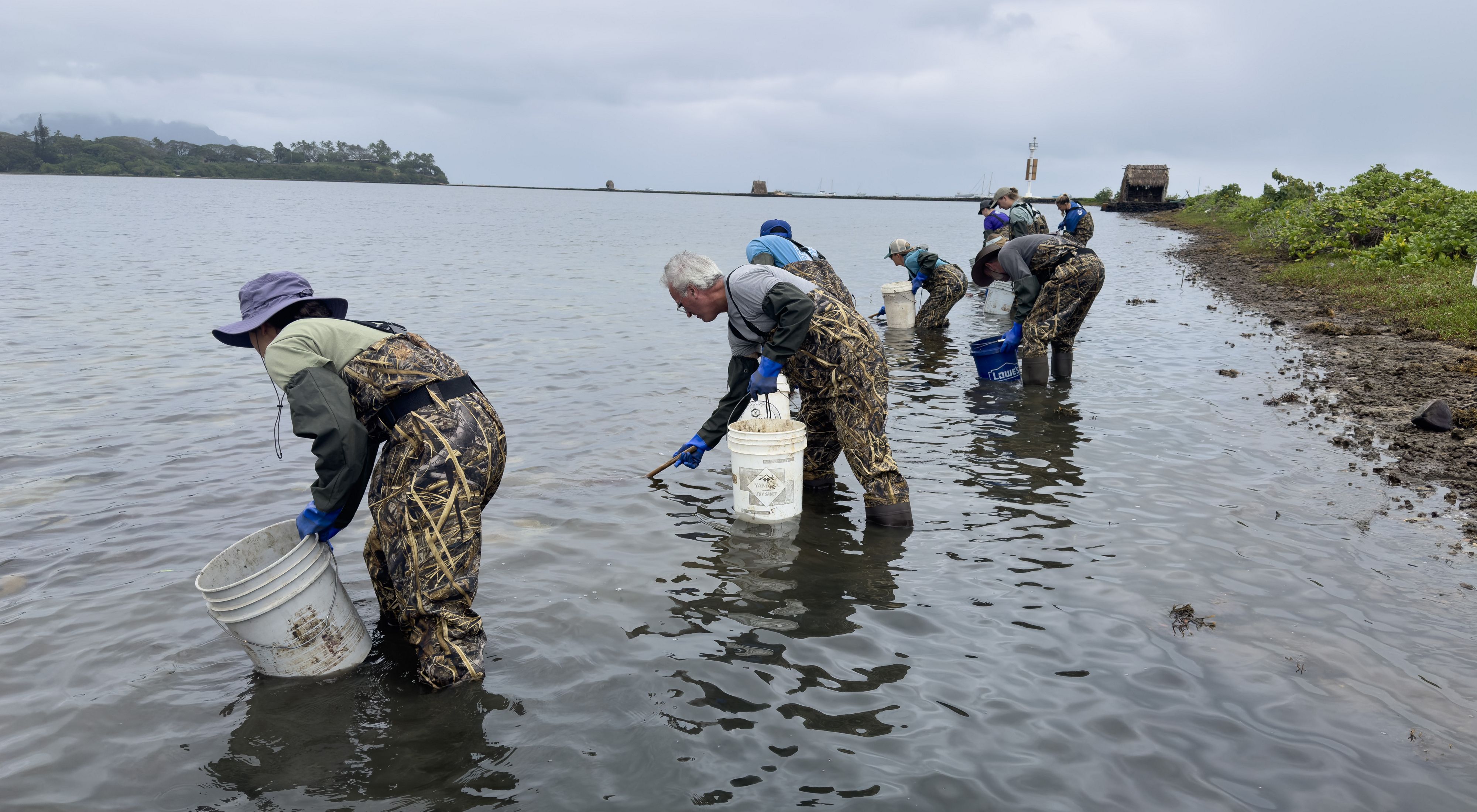Care for ‘Āina Now Coalition Reinforces the Need to Make Natural Resource Stewardship a Priority for State Government
New Survey Results Show Hawai‘i Voters Overwhelmingly Support Funding for Natural Resource Protection and Restoration
Media Contacts
-
Evelyn Wight
Phone: 808-587-6277
Email: ewight@tnc.org
Encouraged by the results of a January 2024 survey of Hawai‘i voters, The Nature Conservancy and other members of the Care for ‘Āina Now coalition, formerly known as the Hawai‘i Green Fee Coalition, showed their strong support for a number of legislative bills to fund natural resource stewardship.
The statewide survey, commissioned by the Care for ‘Āina Now coalition, confirmed many Hawai‘i voters see the connection between natural resource stewardship and quality of life. The survey showed 99% of the respondents agreed Hawai‘i’s beaches, reefs and parks are an essential part of Hawai‘i’s quality of life, and 97% agree it is their kuleana, or responsibility, to protect Hawai‘i’s ocean and lands for future generations.
The survey also showed that four in five Hawai‘i voters—or 80%—believe state government programs are critical to protecting natural resources, from mauka to makai, and mitigating wildlife and flood risks.
Quote: Lea Hong
Taking care of our ‘āina creates healthy, livable and sustainable conditions for ourselves and the next generation.
“We recognize the challenges to the state’s budget as the expenses for the Maui recovery efforts are not yet determined with FEMA reimbursements pending,” said Nahelani Parsons, spokesperson for the Care for ‘Āina Now coalition. “We’re remaining optimistic and hope that as a community we can agree we cannot put off taking care of our ‘āina. This is critical to minimize the risks of devastating fires and other climate-related disasters in the future.”
“Taking care of our ‘āina creates healthy, livable and sustainable conditions for ourselves and the next generation,” said Lea Hong, state director of Trust for Public Land, another coalition member. “Dedicating funds for natural resource conservation is an investment in the physical, emotional and economic well-being of communities across our islands.”
The survey showed that safety has become a top-of-mind issue for many voters. The results showed 75% of respondents are more worried about fire than they were five years ago. This concern is even more pronounced among Maui residents: 86% worry more about fires than they did five years ago, and 57% say they worry “much more.”


“The amount of conservation work being done today is simply not enough to keep our islands safe from wildfire or to sustain the beauty, environmental health and quality of life upon which our entire economy relies,” said Kawika Riley, vice president of external affairs for Kupu, a nonprofit organization that is a member of the coalition. “When we fund conservation, we are funding green jobs for kamaʻāina, which benefits local families and our state economy.”
Unlike in previous years, instead of being limited to a singular solution for funding, the coalition is open to numerous options to fund an estimated gap of about $360 million a year for conservation. “We’re open to all different funding mechanisms, including allocations from the Transient Accommodation Tax (TAT), which could provide an additional source of revenue for our state,” Parsons said.

The survey of 802 Hawai‘i voters was conducted Jan. 5 to 11, 2024 by Fairbank, Maslin, Maullin, Metz & Associates (FM3 Research), a Los Angeles-based firm that specializes in public policy research, to assess Hawai‘i voters’ views on increased government investment to protect, manage and restore land, water, wildlife and recreational resources.
The interviews were conducted online and by landline and wireless phone interviews. The data was weighted to reflect the true geographic distribution of voters across the state. The margin of sampling error for the study is +/-4.0% at the 95% confidence level; margins of error for population subgroups within the sample will be higher.
Ulalia Woodside Lee, executive director of The Nature Conservancy, Hawai‘i and Palmyra, added: “As a coalition, we believe establishing a recurring annual fund of a minimum of $100 million is necessary for natural resource protection and restoration for our islands statewide and that this will ultimately benefit Hawai‘i residents and support the visitor industry.”
About the Care for ‘Āina Now Coalition
The Care for ‘Āina Now Coalition is composed of individuals and organizations that have a shared vision to make to make natural resource stewardship and restoration a priority in Hawai‘i. We believe empowering the Department of Land and Natural Resources (DLNR) with the necessary resources will ensure both kama‘aina and that visitors to the islands can continue to enjoy Hawai‘i’s beauty, have peace of mind for all those in our ‘ohana and make Hawai‘i environmentally and economically resilient. Visit the Care for ‘Āina Now Coalition website.
The Nature Conservancy is a global conservation organization dedicated to conserving the lands and waters on which all life depends. Guided by science, we create innovative, on-the-ground solutions to our world’s toughest challenges so that nature and people can thrive together. We are tackling climate change, conserving lands, waters and oceans at an unprecedented scale, providing food and water sustainably and helping make cities more sustainable. Working in more than 70 countries and territories, we use a collaborative approach that engages local communities, governments, the private sector, and other partners. To learn more, visit nature.org or follow @nature_press on Twitter.
